10. Castellfollit de la Roca 
This is considered one of the most beautiful villages in the region of Catalonia in Spain. It is built onto the basalt cliffs between two rivers. Most of the buildings seem to be hovering on the very edge of the cliff, providing the illusion that they could tumble down at any moment. The whole village is less than one-half of a square mile in size. The oldest parts of the village were built in the Middle Ages, made up of narrow streets and dark corners. The houses here are made from volcanic rock.
9. Rocamadour 
Rocamadour is a tiny village built on the rocky face above a gorge on the Alzou River in southwest France. The buildings of Rocamadour rise in stages up the side of a cliff. Flights of steps ascend from the lower town to the churches, a group of massive buildings half-way up the city cliff. The village, which dates back to the 12th century, became almost deserted as a result of war and the French Revolution. Today it is popular again by both tourists and pilgrims who come to honor St. Amadour the village’s namesake. According to a legend St. Amadour was a witness to the deaths of St. Peter and St. Paul in Rome and later traveled to this location and became a hermit.
8. Bonifacio 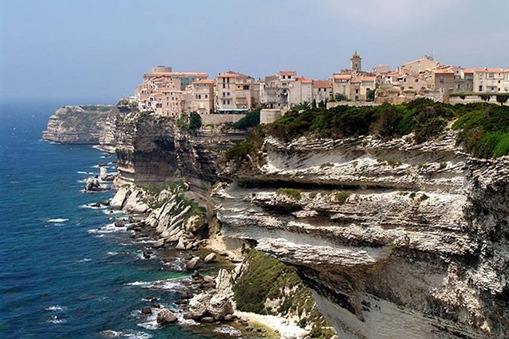
Bonifacio is a city at the southern tip of the island of Corsica. The city and its fortifications extend for some distance along the cliff-tops, which are at about 70 meters (230 feet) elevation. The city cliffs have been undercut by the ocean so that the buildings, which have been placed on the very lip of the precipice, appear to overhang it. The appearance from the sea is of a white city gleaming in the sun and suspended over the rough waters below.
7. Acapulco 
Acapulco is the original Mexican resort town which came into prominence by the 1950s as a getaway for Hollywood stars and millionaires. Still, it remains a popular tourist destination especially among Mexicans and as a spring break destination among US college students. No visit to Acapulco is complete without watching the cliff divers perform their impressive jumps into the shallow stream of water of dangerous tides that forms in the bottom part of La Quebrada. They have been doing it since the 1930s, although today the divers are professionals.
6. Mesa Verde 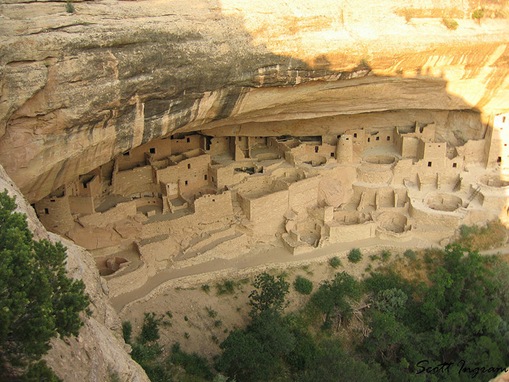
Mesa Verde, in southwestern Colorado, is home to the famous cliff dwellings of the ancient Anasazi people. It may be the most significant archeological preserve of Native American culture in the US. In the 12th century, the Anasazi start building houses in shallow caves and under rock overhangs along the canyon walls. Some of these houses were as large as 150 rooms. The most famous of these are called Cliff Palace and Spruce Tree House. By 1300, all of the Anasazi had left the Mesa Verde area, but the ruins remain almost perfectly preserved. The reason for their sudden departure remains unexplained. Theories range from crop failures due to droughts to an intrusion of foreign tribes from the North.
5. Bandiagara Escarpment 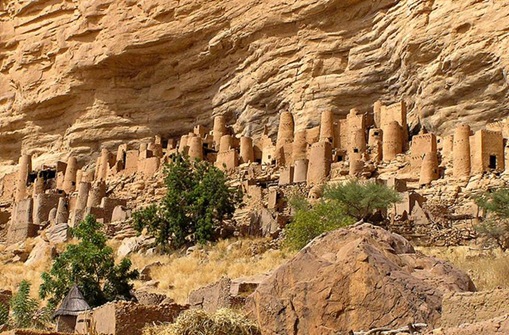
The Bandiagara Escarpment is a sandstone cliff in the Dogon country of Mali that rises almost 500 meters (1,640 ft) from the lower sandy flats below. These cliffs are dotted with ancient cave dwellings of the Tellem people. These people carved their caves into the cliffs of the escarpment so that their dead could be buried high above the flash floods that are common to the area. They built dozens of villages along the cliffs above the caves. In the 14th century, the Dogon people drove out the Tellem and they remain the inhabitants of this area to this day.
4. Ronda 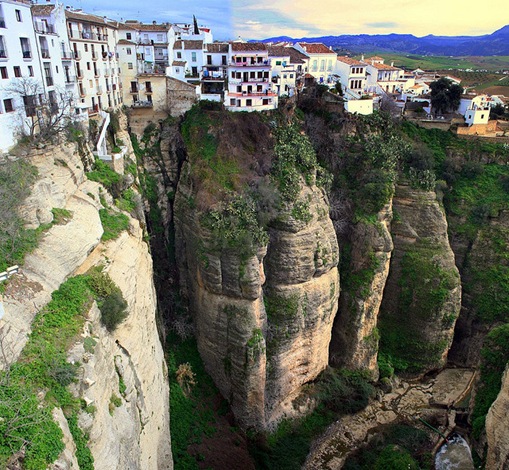
Ronda is located in the province of Malaga in Spain, famous for it’s city cliffs. It is situated in the mountains at an elevation of 760 meters (2,500 ft). The city is split in two by the Guadalevin River that runs through Ronda, causing it to sit on either side of the El Tajo Canyon formed by the river. There are three bridges that precariously cross the canyon so that you can cross from one side of Ronda to the other. The city’s architecture received its influence from the Romans and Moors who once ruled the area. Ronda has the distinction of being the birthplace of bullfighting and Spain’s oldest bullfighting ring is still there.
3. Al Hajjara 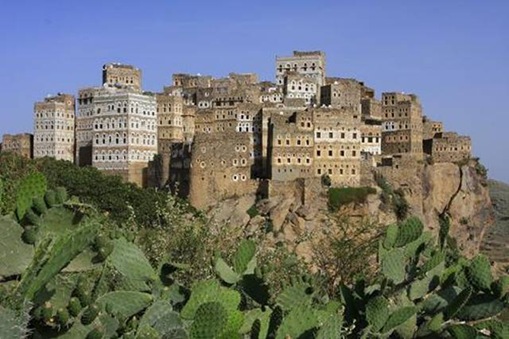
Al Hajjara, sometimes spelt as Al Hajara, is a historical cliff city in the Yemen’s Haraz Mountains situated west of the city of Manakhah. It is one of the most impressive and easily accessible mountain villages in Yemen. The village was literally built into the mountain with quarried stone from the mountainside nearby. Al Hajjara dates from the twelfth century. Its fortified houses are made with massive blocks of unmortared stone, cluster to form an uninterrupted rampart. A series of granaries and cisterns have made it possible for this village, like others in the mountains, to withstand a long siege.
2. Positano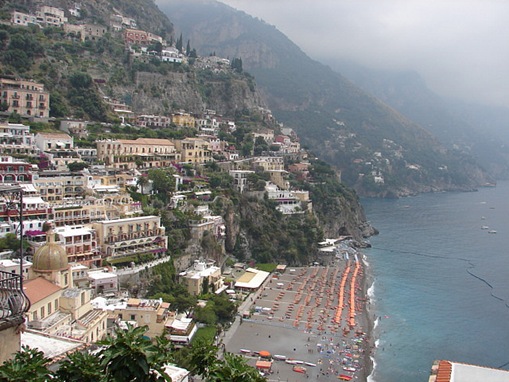
Positano is a small town located on the Amalfi Coast of Compania, Italy. The city seems to be scattered from top to bottom down a hillside leading to the coast. Though the city grew and prospered in medieval times, by the mid 19th more than half of the population was gone. In the 20th century it went from being a poor fishing village to a very popular tourist destination with the help of author John Steinbeck who touted its beauty.
1. Santorini 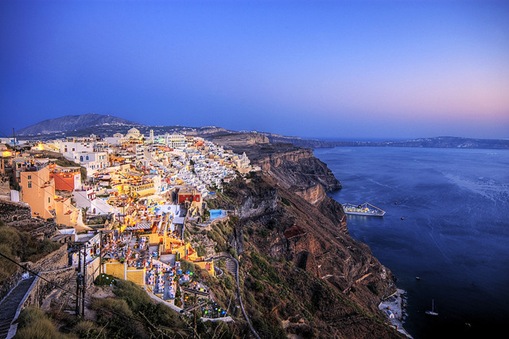
Santorini is a volcanic island in the Cyclades group of the Greek islands. It is famous for its dramatic views, stunning sunsets from the towns of Fira and Oia, the white-washed houses, and its very own active volcano. Oia was built at the top of majestic cliffs overlooking a submerged volcano. Fira, the capital, is a marriage of Venetian and Cycladic architecture, whose white cobblestone streets bustle with shops, tavernas, hotels and cafes, while clinging on the edge of the 400 meter (1,300 ft) high city cliffs. Just above Fira at the highest point of the island is the quintessentially Santorininian town of Oia, with its whitewashed walls sunk into the volcanic rock.










No comments:
Post a Comment